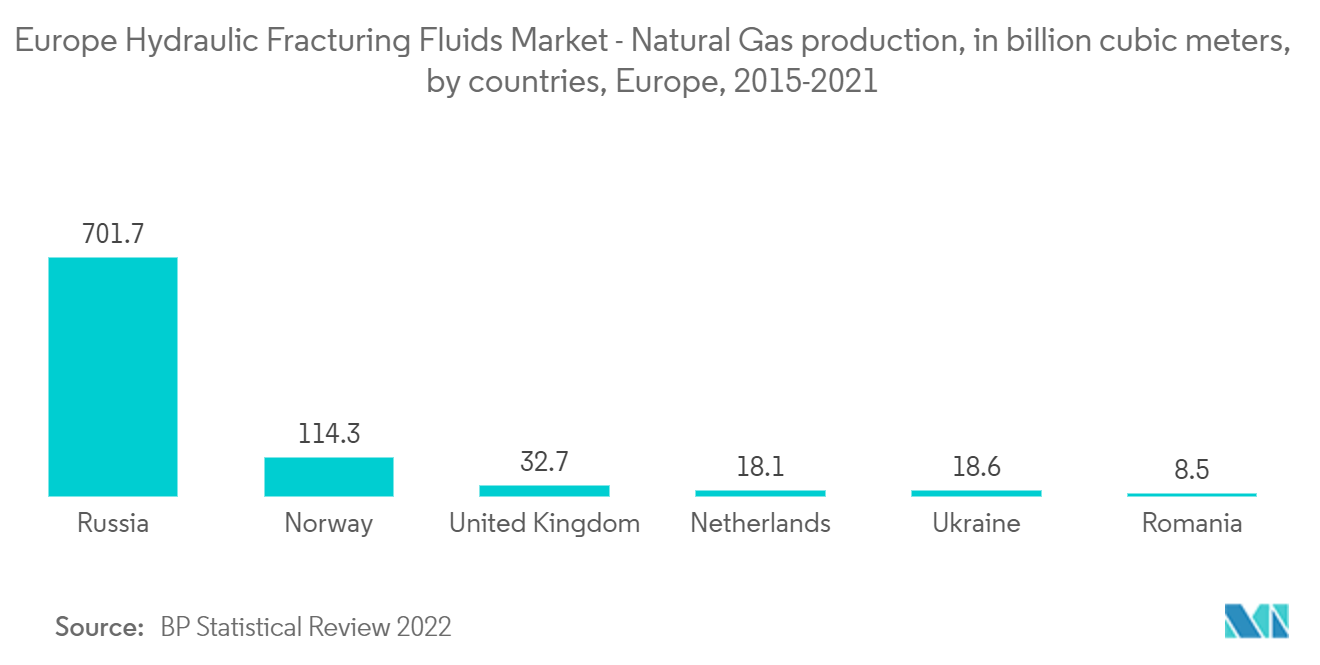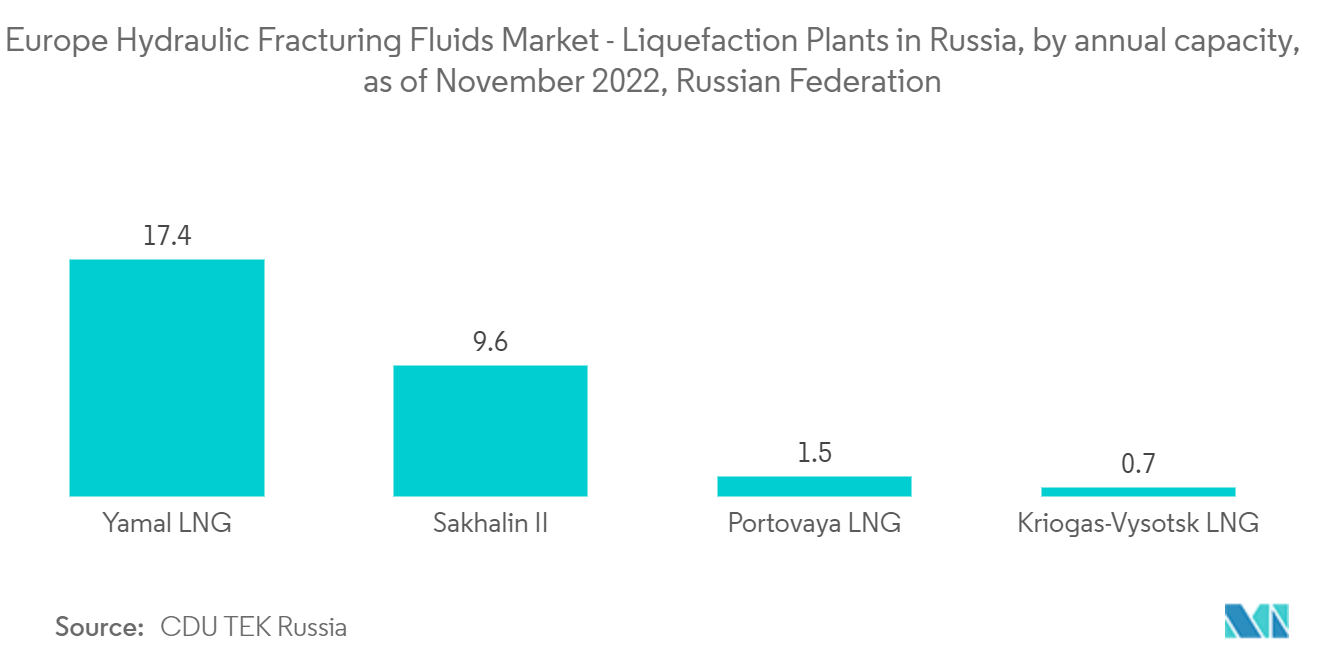Market Trends of Europe Hydraulic Fracturing Fluids Industry
This section covers the major market trends shaping the Europe Hydraulic Fracturing Fluids Market according to our research experts:
Natural Gas to Witness Significant Growth
- Natural gas is a cleaner alternative to oil, and its demand is likely to increase considerably during the forecast period. New projects of natural gas-powered plants, LNG bunkering, and district heating are expected to increase the demand for natural gas in Europe.
- The only countries that are expected to use hydraulic fracturing in Europe are the United Kingdom, Russia, and, to some extent, Poland. However, technological constraints in Poland, economic feasibility issues in Russia, and environmental concerns in the United Kingdom have impeded growth in the sector.
- In February 2022, six new oil and gas fields in the North Sea received approval from the UK government. The finance department pushed the senior authorities to fast-track the licenses for constructing the six energy areas. The growing natural gas fields will support the growth of the hydraulic fracturing fluids market in the future.
- Hence, shale gas production is expected to increase through hydraulic fracturing. Still, a lot is dependent upon the price of shale gas and technological constraints in the production of shale gas.

Russia to Dominate the Market
- Russia has significant shale oil and the biggest potential in shale gas reserves. Bazhenov Shale is known to be the biggest shale reserve in the world. As cheaper sites are abundant, shale gas development in Bazhenov is expected to start in 2024.
- As of 2021, Russia is the world's second-largest producer of natural gas, behind the United States. It also has the world's largest gas reserves and is the world's largest gas exporter. In 2021, the country produced 762 bcm of natural gas and exported approximately 210 bcm via pipeline.
- The pipeline being built through the Baltic Sea (Nord Stream 2) is expected to add to the demand for Russian gas. As of now, the pipeline must go through several countries, which increases the cost of the overall gas, thereby reducing the profit margin for Russian corporations.
- Russia has been expanding its liquefied natural gas (LNG) capacity to compete with growing LNG exports from the United States, Australia, and Qatar. In 2021, the government released a long-term LNG development plan, targeting 110-190 bcm/year LNG exports by 2025.
- In February 2022, Yakutia LNG, a 17.7 million metric ton/year (mmty) liquefaction project proposed for the Russian Republic of Yakutia, is planned to start in 2027 to deliver liquefied natural gas (LNG) from Russia's Far Eastern coast to China. This project is expected to reach a final investment decision (FID) in 2023.
- Hence, Russia is expected to dominate the market due to an increase in investments in the hydraulic fracturing sector and the private sector's push to discover new avenues of growth in the oil and gas industry.


